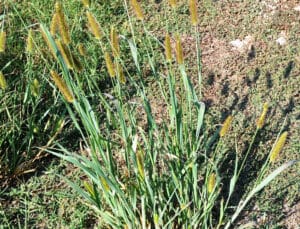Chamaesyce Maculata L.
Description
Spotted spurge is found in poorly maintained, thinning turf, and in newly established turf seeded in late spring or summer. Individual plants tend to lay mostly flat against the soil surface and spread outward from central growing points in roughly radial patterns. Spurge plants are frequently found near ornamental beds or along sidewalks and are most noticeable during summer months.
Life Cycle
Spotted spurge has a summer annual life cycle. Plants emerge from seeds in early to mid-summer, produce taproots from central growing points, and spread laterally in more-or-less radial patterns, but do not root at nodes. This species produces small white and pink flowers, and sticky seeds that attach to fur of animals, soles of shoes, and tires of lawn mowers. Seeds remain dormant over the winter months then germinate and give rise to new plants in summer of the following year.
Identification
Branching stems of spotted spurge are pink or red and covered with fine hairs. Stems grow close to the ground, and generally do not rise more than a few inches above the soil surface. When broken or punctured, stems exude a milky-white, sticky liquid. Leaves are small (about ½ to ¾ inches long and ¼ to ½ inch wide), oblong, dark green, often with a purple blotch in the center. Leaf margins are smooth or slightly serrated, and mostly rounded at tips. Leaves have short petioles and are arranged opposite one another on stems. Tiny pink and white flower clusters are formed in leaf axils on the upper portion of spotted spurge stems during mid to late summer. Clusters are made up of male and female flowers that are enveloped in a cup-like structure called an involucre. Seeds are produced in small capsules and have sticky surfaces which can adhere to shoes and animal fur.
Cultural Control
Infestations of spotted spurge in newly planted lawns can be reduced by establishing turf in late summer or fall. In established lawns, spurge populations can be reduced by improving turf density through fertilization, regular mowing, and use of turfgrasses well-adapted to site conditions. This weed can be controlled with various postemergence herbicides, particularly those containing combinations of 2,4-D, dicamba, MCPP, and/or fluroxypyr. Some preemergence herbicides will control spotted spurge from seed but have no effect on emerged plants.





